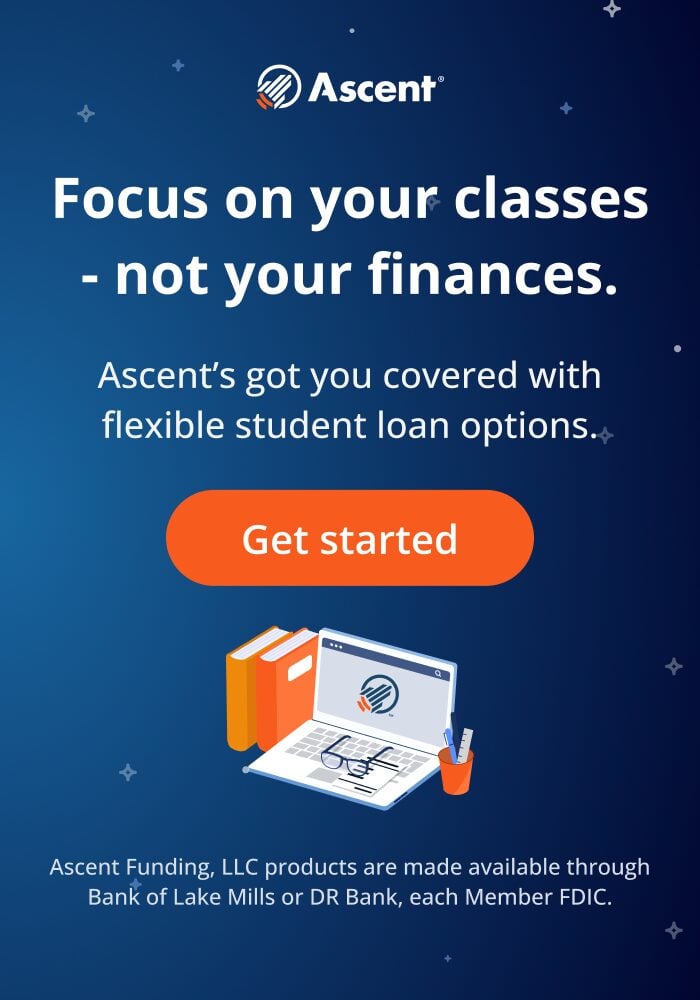
Flickr user 401(k)2012
Finance is often at the forefront of many major college decisions. Is this school too expensive? What kind of financial aid can I receive? How much debt will I graduate with? What sort of major converts to a well-paying job? There are enough questions to make your mind spin.
But there are a lot of misconceptions and mysteries out there about colleges and money. Some of the following financial facts might just surprise you. If some of the stats shock you, don’t panic just yet—we promise there’s a light at the end of the tunnel.
Cost of College
- In 2015-16, the average tuition for in-state public college costs $9,410. For out-of-state: $23,893.
Now keep in mind, that’s just tuition cost—it doesn’t include things like room and board, textbooks, or other costs that factor in. If you go to school within your state of residence, chances are you’ll have a smaller price-tag. As such, many college-bound students stay somewhat close to home when it comes to higher education, just to keep things more affordable.
Going to school in another state is going to cost a bit extra. And again, this is just the tuition itself. All the same, if your dream school is a few states away or on the other side of the country, it can pay off in the long run.
- The average tuition for private college in 2015-16: $32,405.
Private colleges are oftentimes more expensive than their public counterparts. However, it’s relatively rare for a student at a private college to actually pay the full posted sticker price—only about 15% of the student body, in fact, pay the entire price without extra aid.
- College is 400% more expensive than it was 30 years ago.
Yikes. The thought of paying for college can get a bit overwhelming when you hear stats like that. However, there’s another another thing that’s increased over the years: financial aid.
Financial Aid
- Over 85% students are receiving some form of financial aid.
Whether it’s through scholarships, grants, or other forms of aid—from private, federal, or the schools themselves—most college students in America are receiving aid to help pay for their higher education. Not too long ago, back in 2007-08, that number was only 66%.
- In 2014-15, 45% of high school graduates did NOT file the FAFSA.
The FAFSA—Free Application for Federal Student Aid—is an oddly under-utilized tool that can find financial aid. Students can file the FAFSA every year in order to find sources of federal aid. Many private-sourced scholarships require the student to have filed the FAFSA, so it’s a crucial element to make college more affordable. And it’s free—so there’s really no reason you shouldn’t fill it out.
- $122.7 billion worth of college scholarships and grants were awarded in 2013-14.
There is a lot of aid out there, provided you throw your hat into the ring and apply for some. Even just a handful of scholarships can significantly lessen the financial strain college can bring. But you won’t win any scholarship or grant you don’t apply for.

Loans
- The average 2016 college student graduated with $37,172 in student loan debt.
That’s a 6% increase from last year alone (where the average was around $35,000). As the cost of college rises, so to does the debt. However, had students filed their FAFSAs and sought other forms of financial aid, that staggering number could be lower.
- Collectively, Americans owe nearly $1.3 trillion in student loan debt.
Ok, after you blink the stars from your eyes, take a few deep breaths. All of this information isn’t meant to scare you, but rather prepare you. The more informed you are, the better decisions you can make. If you make a financial plan, file the FAFSA, apply to scholarships, compare college net prices—college can be affordable.
Saving up, spending smart, and searching for aid can lower not only the price-tag of a higher education, but it can reduce your potential loans as well. And College Raptor can help.
With our free match tool, you can discover not only individualized college matches based on your academic, social, and financial fit, but you can also see your personalized tuition price estimate at nearly every school in the country!
You can also read up on our many financial aid, cost of college, and scholarship articles to discover new ways to save, and gain a deeper understanding of different elements in college finance.
| Lender | Rates (APR) | Eligibility | |
|---|---|---|---|
 |
5.34%-15.96%* Variable
3.99%-15.61%* Fixed
|
Undergraduate and Graduate
|
VISIT CITIZENS |
 |
4.92% - 15.08% Variable
3.99% - 15.49% Fixed
|
Undergraduate and Graduate
|
VISIT SALLIE MAE |
 |
4.50% - 17.99% Variable
3.49% - 17.99% Fixed
|
Undergraduate and Graduate
|
VISIT CREDIBLE |
 |
6.00% - 13.75% Variable
3.99% - 13.75% Fixed
|
Undergraduate and Graduate
|
VISIT LENDKEY |
 |
5.50% - 14.56% Variable
3.69% - 14.41% Fixed
|
Undergraduate and Graduate
|
VISIT ASCENT |
 |
3.70% - 8.75% Fixed
|
Undergraduate and Graduate
|
VISIT ISL |
 |
5.62% - 16.85% Variable
3.69% - 16.49% Fixed
|
Undergraduate and Graduate
|
VISIT EARNEST |
 |
5.00% - 14.22% Variable
3.69% - 14.22% Fixed
|
Undergraduate and Graduate
|
VISIT ELFI |









